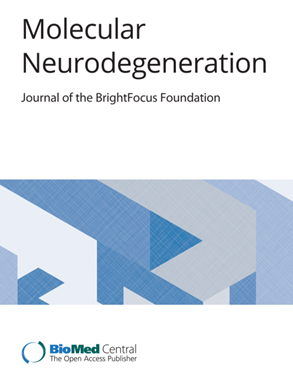Brain clearance of protein aggregates: a close-up on astrocytes
IF 14.9
1区 医学
Q1 NEUROSCIENCES
引用次数: 0
Abstract
Protein misfolding and accumulation defines a prevailing feature of many neurodegenerative disorders, finally resulting in the formation of toxic intra- and extracellular aggregates. Intracellular aggregates can enter the extracellular space and be subsequently transferred among different cell types, thus spreading between connected brain districts. Although microglia perform a predominant role in the removal of extracellular aggregated proteins, mounting evidence suggests that astrocytes actively contribute to the clearing process. However, the molecular mechanisms used by astrocytes to remove misfolded proteins are still largely unknown. Here we first provide a brief overview of the progressive transition from soluble monomers to insoluble fibrils that characterizes amyloid proteins, referring to α-Synuclein and Tau as archetypical examples. We then highlight the mechanisms at the basis of astrocyte-mediated clearance with a focus on their potential ability to recognize, collect, internalize and digest extracellular protein aggregates. Finally, we explore the potential of targeting astrocyte-mediated clearance as a future therapeutic approach for the treatment of neurodegenerative disorders characterized by protein misfolding and accumulation.大脑清除蛋白质聚集体:星形胶质细胞特写
蛋白质的错误折叠和积累是许多神经退行性疾病的主要特征,最终导致细胞内和细胞外毒性聚集体的形成。细胞内聚集体可进入细胞外空间,随后在不同类型的细胞之间转移,从而在相连的脑区之间扩散。虽然小胶质细胞在清除细胞外聚集蛋白方面发挥着主要作用,但越来越多的证据表明,星形胶质细胞也对清除过程做出了积极贡献。然而,星形胶质细胞清除错误折叠蛋白的分子机制在很大程度上仍不为人所知。在此,我们首先简要概述了淀粉样蛋白从可溶性单体到不溶性纤维的渐进转变过程,并以α-突触核蛋白和Tau为例。然后,我们强调了星形胶质细胞介导的清除机制,重点是它们识别、收集、内化和消化细胞外蛋白质聚集体的潜在能力。最后,我们探讨了以星形胶质细胞介导的清除为靶点,作为未来治疗以蛋白质错误折叠和积累为特征的神经退行性疾病的一种治疗方法的潜力。
本文章由计算机程序翻译,如有差异,请以英文原文为准。
求助全文
约1分钟内获得全文
求助全文
来源期刊

Molecular Neurodegeneration
医学-神经科学
CiteScore
23.00
自引率
4.60%
发文量
78
审稿时长
6-12 weeks
期刊介绍:
Molecular Neurodegeneration, an open-access, peer-reviewed journal, comprehensively covers neurodegeneration research at the molecular and cellular levels.
Neurodegenerative diseases, such as Alzheimer's, Parkinson's, Huntington's, and prion diseases, fall under its purview. These disorders, often linked to advanced aging and characterized by varying degrees of dementia, pose a significant public health concern with the growing aging population. Recent strides in understanding the molecular and cellular mechanisms of these neurodegenerative disorders offer valuable insights into their pathogenesis.
 求助内容:
求助内容: 应助结果提醒方式:
应助结果提醒方式:


